Everything you need to know about maintaining wood cutting boards, including how to clean a wood cutting board, how to remove stains from a wood cutting board, how deodorize a wood cutting board, how to sanitize a wood cutting board, and when to apply oil and wax to prevent drying and cracking.
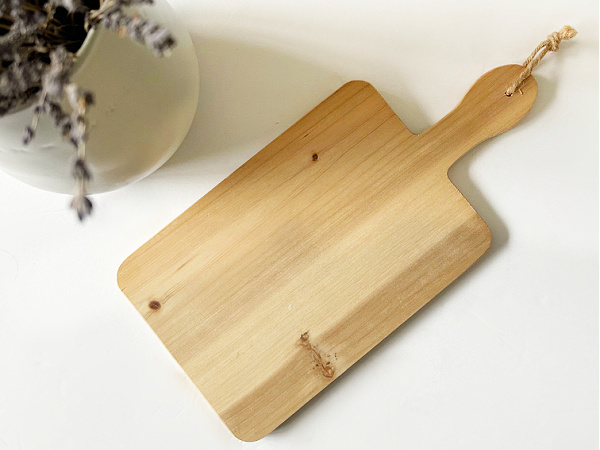
It’s about time…
We moved into our current house years ago and I have yet to use the wood cutting boards that pull out from under the counter because I never took the time to clean and sanitize them. That ends today. I have done a deep dive into the world of cleaning and maintaining wood cutting boards, and I’m ready to tackle this project.
What You Need to Clean Wooden Cutting Boards
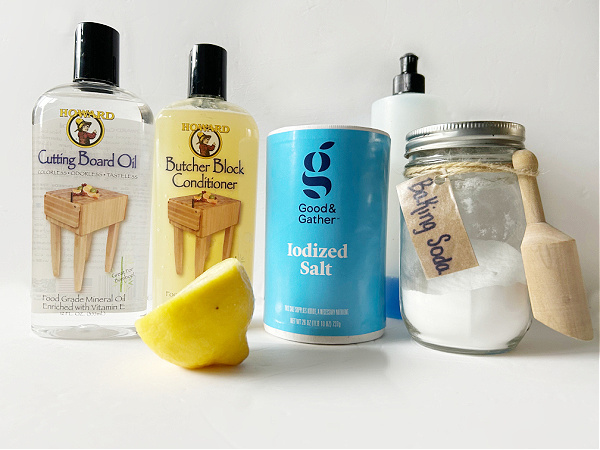
Affiliate links may be used. Please see our advertising disclosure for more information.
Ingredients Needed to Clean Wood Cutting Boards
- Dish Soap– Using a mild, fragrance-free dish soap is best. I found Dapple Dish Soap (which is actually designed for cleaning baby bottles) to be a great possibility as it is formulated without a lot of the harsher ingredients you might find in regular dish soap.
- Baking Soda & A Non-Scratch Scour Pad– Baking soda is used to remove stains on the wood surface, so if your cutting board doesn’t have any stains, you won’t need baking soda or a scour pad.
- Lemon & Salt– Lemon and Salt can be used to both clean and deodorize a wood cutting board. This is especially helpful after cutting more potent smelling foods, like onions or garlic.
- Food Grade Mineral Oil– There are mineral oils specifically designed for wood surfaces like cutting boards and butcher block. Mineral oil is recommended because it is colorless, odorless, and tasteless; plus it doesn’t go rancid like olive oil.
- Food Grade Wood Wax– Again, make sure to use a wax/conditioner designed for use on wood surfaces that come into contact with food. The purpose of the wax is to seal in the mineral oil to protect wood cutting boards from cracking.
Supplies Needed to Clean Wooden Cutting Boards
- Dish Cloth
- Dish Towel
- Cleaning Cloths– You will need cleaning cloths to apply the mineral oil and wood conditioner. While you can certainly buy cotton cleaning cloths, I decided to cut up an old t-shirt, which works just as well.
How to Clean A Wood Cutting Board
How to Wash Wooden Cutting Boards
The very first step in cleaning a wood cutting board is to thoroughly wash it with warm water and a mild dish soap. It is important not submerge a wood cutting board in water as this could result in warping; and never put a wood cutting board in the dishwasher. Instead, run warm water over the cutting board, turn off the water to wash with the soap, then rinse.
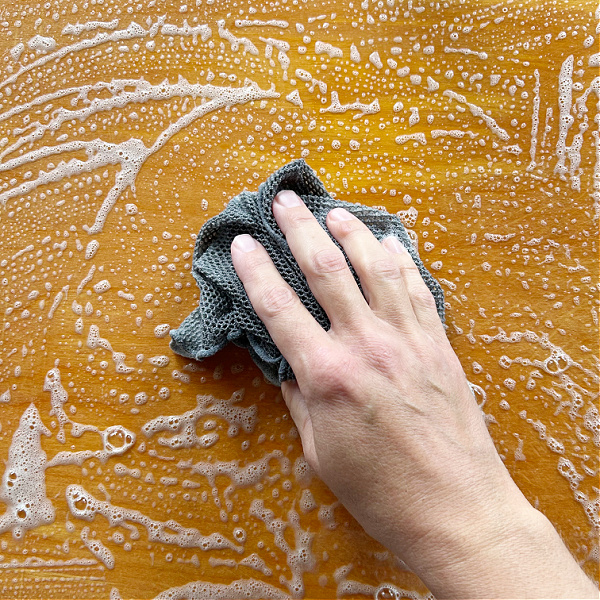
Make sure to wash both sides of the cutting board (even if you only use one side) as this will ensure even drying to prevent warping.
After rinsing, thoroughly dry the cutting board with a dish towel, removing as much water as possible.
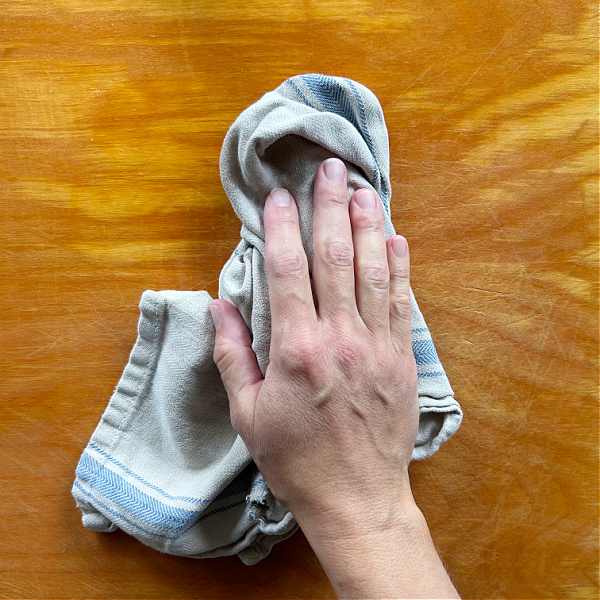
Once dried, lean the cutting board against a wall or piece of furniture to allow airflow around the entire board. Let it dry for several hours, or overnight.
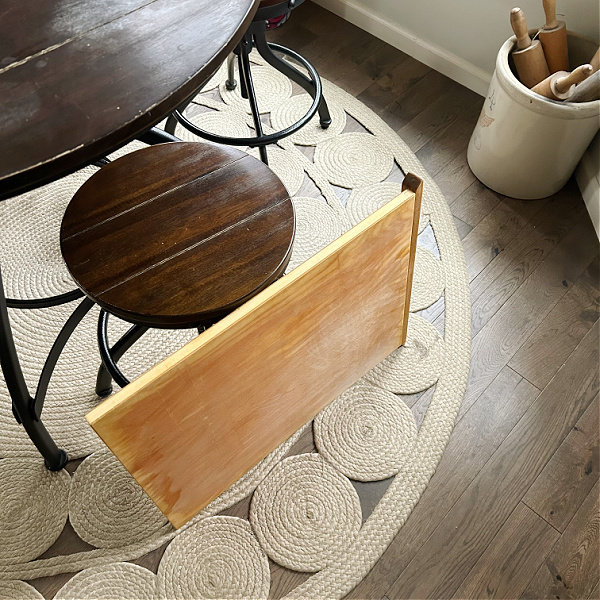
Do not store the cutting board until it is completely dry, as this increases the likelihood of molding and/or warping.
How to Remove Stains On A Wood Cutting Board
If there are any stains on the wood, you can use baking soda to remove them. Simply apply a liberal amount of baking soda over the stain, and gently scrub with a wet non-scratch scour pad.
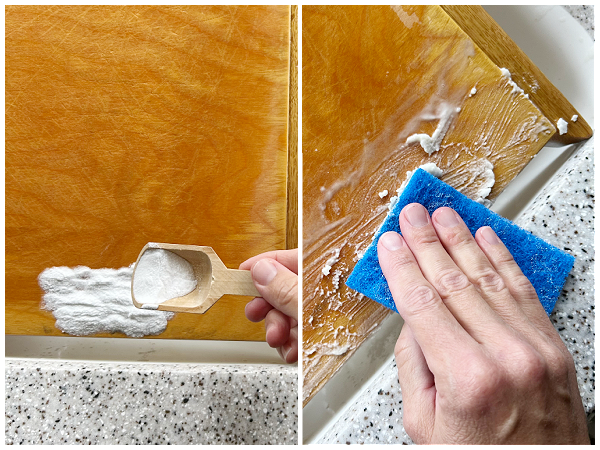
To be fair, this method definitely lightened the stain quite a bit, but did not fully remove it. (The before picture was taken when the cutting board was wet, the after picture was taken when dry. This is the reason for the cutting board color difference.)
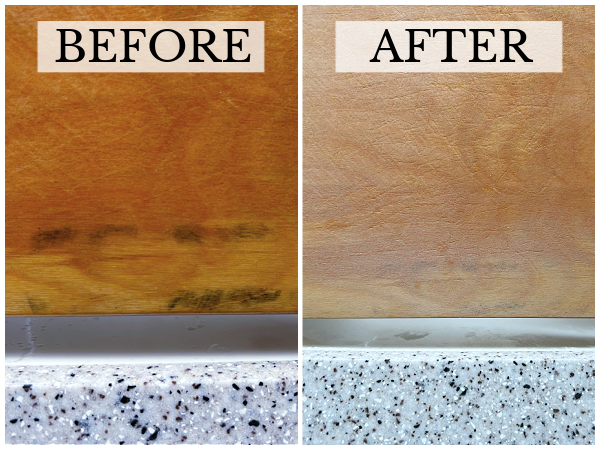
How to Deodorize A Wooden Cutting Board with Lemon & Salt
Wood tends to absorb odors quite easily, so if you chop an onion, it’s likely the wood cutting board will take on that smell. To deodorize a wood cutting board, all you need is some salt and a lemon.
Start by liberally applying salt to the surface of the wood cutting board. Then squeeze out the juice of half a lemon over the salt and use the lemon half to scrub the salt into the cutting board.
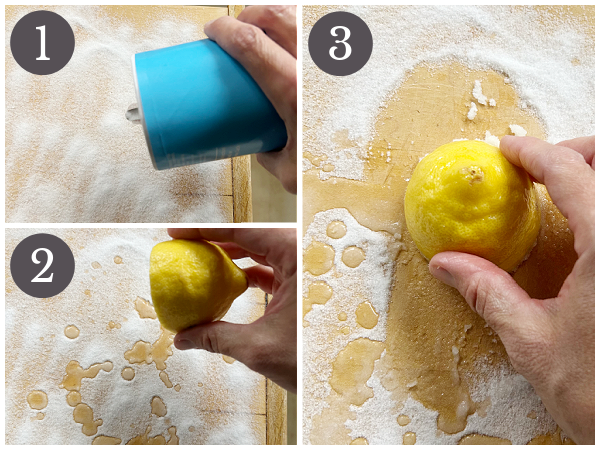
Allow the salt and lemon mixture to sit on the board for several minutes to an hour. Then rinse with warm water, dry with a dish towel, and lean against a wall or piece of furniture to dry. Do not store the cutting board until it is completely dry.
How to Prevent Cracks in Wooden Cutting Boards
Wood cutting boards are prone to drying and cracking if not properly care for. Until researching for this post, I had no idea you were supposed to oil and wax wood cutting boards. Now that I know, that’s what I’m going to do.
The first product needed is food grade mineral oil. I looked for one that specifically stated it could be used on wood cutting boards. Mineral oil is made to penetrate deep into the wood to provide moisture to the cutting board.
Apply the mineral oil to the cutting board and use a clean cloth to spread it around.
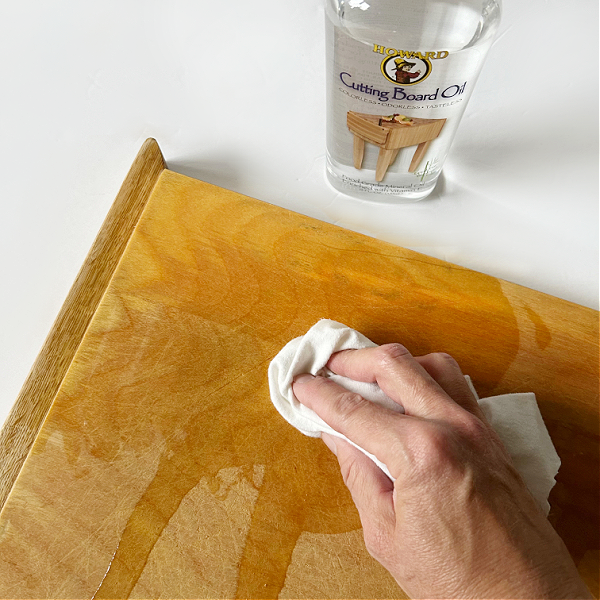
The following is information is for Howard’s Cutting Board Oil. If you choose to use a different brand, make sure to check the instructions as they may be different from what you see here.
Once applied, allow the mineral oil to sit on the cutting board for at least one hour. For best results, leave it on overnight as this allows the mineral oil to continue penetrating deeper into the wood. When the time is up, wipe off any excess oil from the surface of the wood.
If you are using mineral oil on a new cutting board, it is recommended you apply two coats. If the cutting board is more than 1 1/2 inches thick, it is recommended you apply 3-4 coats.
The last step is to apply a food grade wood wax or conditioner. This will help seal in the moisture provided by the mineral oil.
Simply apply the wood conditioner with with a (new) cleaning cloth (not the one used for the mineral oil).
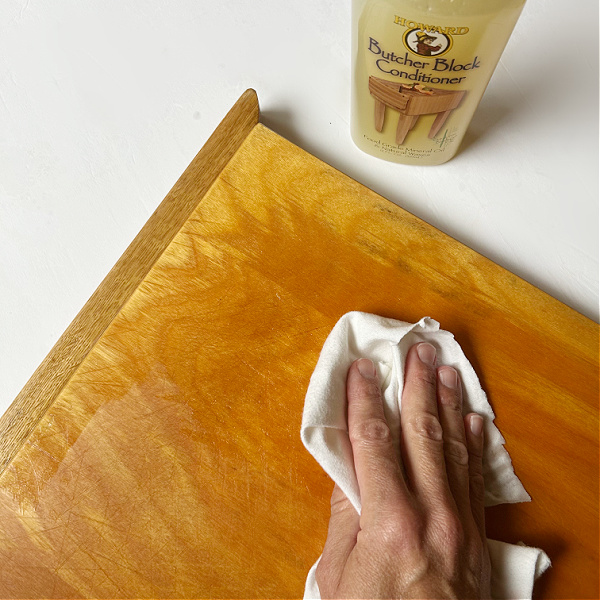
The following is information is for Howard’s Butcher Block Conditioner. If you choose to use a different brand, make sure to check the instructions as they may be different from what you see here.
Allow the conditioner to sit for a minimum of one hour, however overnight is recommended. When the time is up, wipe off any excess conditioner. Again, if the cutting board is more than 1 1/2 inches thick, it is recommended that you apply 3-4 coats of conditioner.
How To Sanitize A Wood Cutting Board
Every once in awhile, you may want to consider sanitizing your wood cutting board. While most people think of bleach as the ultimate sanitizer, there is something much safer to use on your wood cutting boards: Force of Nature Cleaner. This particular cleaner is made with three simple ingredients: salt, vinegar and water, but it’s powerful enough to be labeled a hospital-grade disinfectant. It is “safe to use on food preparation areas like cutting boards, kitchen counters, dining tables and high chair trays… [Simply] spray Force of Nature directly onto the surface and let dry naturally.” (Source)
I did a full review of Force of Nature cleaner if you are interested in learning more.
Side Note: Never cut raw meat on a wood cutting board. This introduces bacteria that can seep into the wood. Instead, use a glass cutting board.
We think you might also love these ideas!
DIY Wood Furniture Polish | Naturally Polish Silverware | Kitchen Cleaning Hacks
Common Questions About Cleaning Wood Cutting Boards
Can I Use Vinegar to Sanitize Wooden Cutting Boards?
While I love cleaning with vinegar, it’s not approved as a sanitizer or disinfectant. If you are simply looking to clean a wood cutting board, you could use vinegar, but due to its strong odor, I would advise using the methods mentioned above instead.
How Often Should I Oil and Wax A Wood Cutting Board?
From what I can tell, there isn’t an exact science to oiling and waxing wood cutting boards. While many suggest oiling and waxing twice a month, it will depend on how often you use the cutting board. I would say, once you notice the wood looking dull and dry, it’s time to reapply.
Do I Need to Wash Wood Cutting Boards Every Time I Use Them?
If you are simply slicing bread on a wood cutting board, you certainly do not need to wash it with soap and water; simply dust off the crumbs and be on your way. However, if you are cutting anything that has a strong odor, may stain the surface, or creates a mess, I would definitely suggest washing it.
Love it? Pin it!
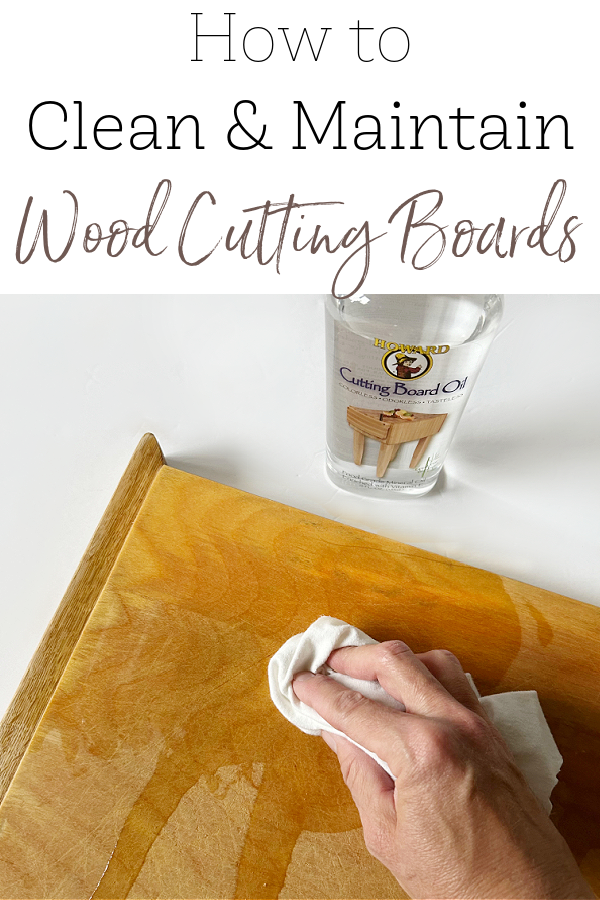
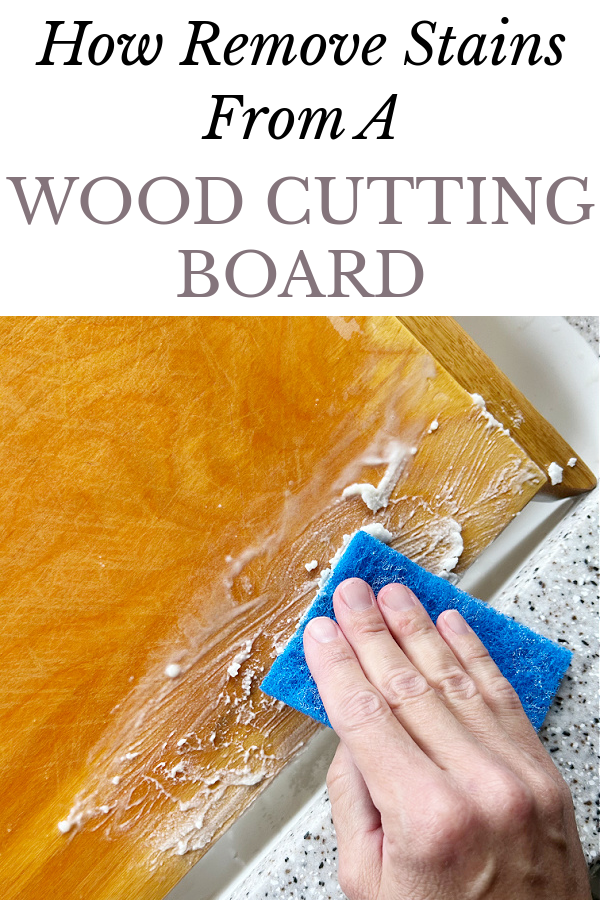
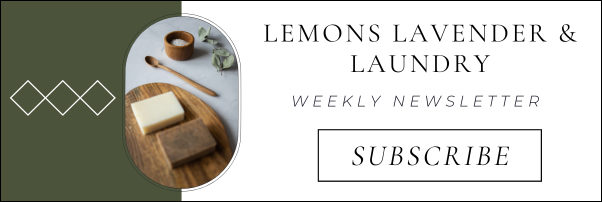

Leave a Reply